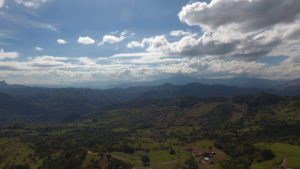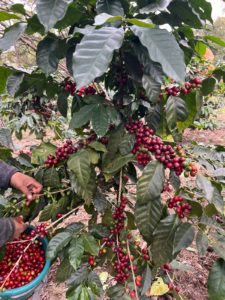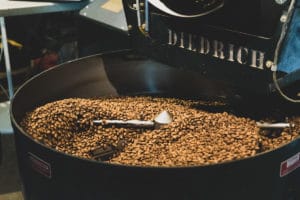As the world’s population consumes more and more coffee, the top-producing countries will play an interesting role in determining the varieties available and prices. And the world does increasingly love its coffee! Coffee growth is concentrated in the coffee belt. Coffee only grows well in a limited region along the equator, yet people from pole to pole wake up or reenergize with a cup o’ joe. While the top-producing countries like Columbia and Brazil get a lot of attention, they’re also getting more competition from their smaller rivals.

Honduran Coffees Are Gaining Traction
Many people don’t associate Honduras with coffee growth, but this small, tropical country has ranked in the top 10 coffee-growing countries for many years running. In fact, it’s the largest coffee producer in Central America in 2022. Currently, Honduras ranks sixth in the world. Of course, since it is small, it may never overtake Brazil. Concentrating that much on a single crop might not be on Honduras’ wish list either.
Honduras has its eye on passing Ethiopia to be the fifth largest grower of coffee worldwide. In the long view of history, some would say this is a big accomplishment. That’s because Ethiopia is the locale where the energizing effect of coffee was first discovered, as we recount in another post on the history of the coffee bean. Longevity in coffee growth that spans centuries doesn’t entail a right to dominate the current market, however! In fact, most of the biggest producers are in Latin America. Coffee in Honduras is an exciting prospect for this small country.
High-Volume Coffee Producers
Once the prototype of a “banana republic” (or the reason the term was coined), Honduras’ economy has been able to diversify in the past few decades. In Honduras, coffee has been grown and drank for centuries. Rumor has it coffee arrived from Spain in the eighteenth century. It was definitely grown by Honduran farmers in the nineteenth. Then, larger-scale coffee production began at the turn of the twentieth century.
For a while, Honduran coffee was mostly used in blends. Lately, it has been departing from that reputation. Its higher altitude coffee farms have produced beautiful coffees with equilibrated acidity and soft aromas. In terms of quality, single-origin Honduran coffees are ranking with Colombian, Costa Rican, and Jamaican brews. Certainly, Honduras’ potential to produce higher volumes of great coffee is still untapped.
The two big South American coffee exporters, Brazil and Colombia, have decreased their production by 19.2% in the past few years. Of course, Honduras has also suffered challenges recently. Between the COVID-19 pandemic, erratic weather, leaf rust and supply chain challenges, countries near the equator haven’t had it easy since 2019. However, in the big picture, the top spots for coffee-producing countries are accessible right now. And fame for gourmet and premium coffee is more up for grabs than ever. The names of underrated countries like Honduras can more frequently appear on the labels of coffee bags in North America and southern South America.

Superior-Tasting Coffee
Years ago, Costa Rican farms succeeded in converting from producing standard coffee to crafting specialty coffee and changing their reputation. However, many regions of central America have similar ecological conditions. There’s also lots of topographical diversity in Central American countries, due to the mountains. So there is far from one location-based recipe to produce especially tasty coffee! The terrain and climate in Honduras can even produce gourmet coffee. We happen to know some farms producing delicious coffee in Honduras, but more on them later.
Due to socioeconomic, political and natural hardships, Honduras could deeply benefit from expanding its solid foundation of coffee growth in the country. Of course, we’re only having some fun with the supposed competition for top spots. Different types of premium coffee in Honduras have great potential to improve Honduran coffee’s reputation. There has been a steep rise in the price of coffee, and of Honduras’ exports in general. It’s been referred to as the “Cornerstone of Honduran Agriculture.” As of 2020, the highest value export was coffee.
The Movement of Coffee
The reality is that people outside of the equatorial region must get their coffee from a country in the coffee belt. Coffee just doesn’t grow well in the continental U.S. Since it’s an item that needs to come from another country, it’s important to consider the chain of people involved. Sure, there are a lot of designations and labels that appear on coffee bags and in coffee shops. From planting the seeds to caring for the plant to transporting and roasting, many people are involved in bringing a tasty cup of coffee to someone from the global north or south.
One of the best ways to ensure people are treated well is through purchasing single-origin coffees. The opposite of a single-origin is a blend. A coffee that’s considered a blend is a mashup of beans from different farms within one country, or even from different countries. While single origins can vary more in flavor from blends, it is much easier to track the treatment of the plant matter and people with a single-origin coffee. They’re also more fun because they truly reflect the flavor of one area.
Supporting Honduran Coffee
While investing in coffee growth or helping support production with routine purchases is worthwhile, there is a lot of opportunity for purchases to help stabilize and stimulate in Honduras. The existing coffee region in the west can be fortified and expanded. Fortifying is an important step in the face of Honduras’ recent weather, pest and pandemic challenges. Most coffee in Honduras is grown in the western part of the country. This mountainous region borders Guatemala and El Salvador.
Nestled in the mountainous region of Santa Rosa de Copán, Subida Coffee Co. produces gourmet coffee. At 1,200 meters (3,900 feet) with intermittent cloud cover, it’s a place just cool enough to brew one cup of hot coffee after another to compare coffee variations. Locally, Santa Rosa has been famous for a coffee-flavored liqueur called Timoshenko. It’s been produced there for decades. Interestingly, it’s named after a Soviet General from World War II.

Coffee for a Great Cause
For a single-origin adventure, notes of brown sugar and black cherry await those who brew Subida’s dark roast. The medium roast offers notes of chocolate and sweet citrus. Since Subida is operated by a non-profit who donates 100% of the profits to charity, coffee never tasted so rich and wholesome!
The non-profit educates teenagers who would otherwise not be able to finish their education. By offering traditional schooling and agricultural instruction, they are enlarging the foundation of growers of Honduras’ most profitable crops, along with other products of agriculture and aquaculture. A path to a secure and productive life is not always readily available to youth in the mountains of Honduras. Called Mission Upreach, this non-profit produces stellar single-origin coffees that can be ordered under a subscription model.

